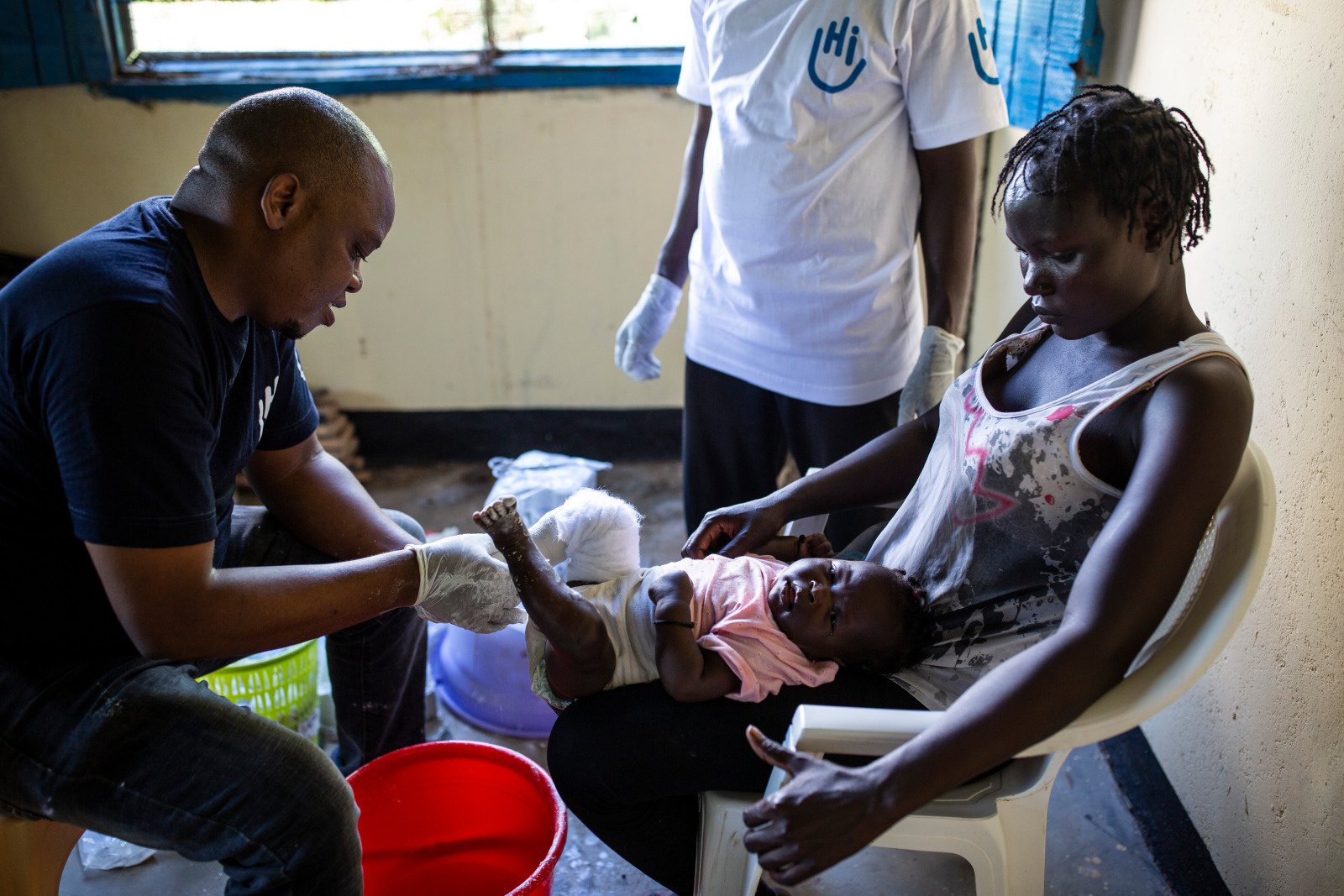'My dream has come true'
While he was working with the Association for the Physically Disabled of Kenya in Nairobi, Simon used to meet Humanity & Inclusion staff in the field. In 2017, he made the decision to seek a working opportunity in HI. For him, it was important to have a job that offered the chance to serve persons with disabilities.
After applying three times, his perseverance and passion led to him being hired by the organization. Simon has now been working for HI for five years as a rehabilitation officer and occupational therapist at the Kakuma refugee camp.
“I am very proud to be working with HI. I applied for the job three times because this was what I wanted to do with my life: I wanted to help and support people with disabilities, especially children. After 5 years of working, the passion is still there, I have to continue.”
Rehabilitation for children
As a pediatrics rehabilitation officer and occupational therapist, Simon provides specialized care and support to children with disabilities and delayed developmental milestones. He conducts assessments and evaluations at the center and at the community level. Simon comes up with a rehabilitation intervention plan for each child, together with the caregivers who accompany the children, to improve their motor skills, cognitive abilities, self-care and independence.
Simon has been involved with some children since birth. He also plays an important role with parents and caregivers. He helps parents accept their children’s disabilities and then trains them to provide basic rehabilitation support at home.
Simon also works in the outreach program, providing services to children who are far from the rehabilitation centers. Once assessment and evaluation are done, Simon develops a treatment plan together with the parents and rehabilitation center workers, to achieve the rehabilitation goals.
Like everyone else, Simon has encountered challenges in his work. The challenges include the distance between the rehabilitation center and people's homes. Some people want to go to the center to benefit from specialized services, but they are not able to get there. The second challenge Simon faces is the follow-up of the refugees supported by the organization. Some refugees supported by HI return to their country of origin through repatriation or relocate to other camps. Every day, Simon does his best to overcome these challenges.
Working in the refugee camp has offered Simon with opportunity for personal and professional growth, development of skills, experience and deeper understanding of the unique challenges faced by the people living in refugee camps.
Supporting Hope
Hope was bo rn with clubfoot, with both feet turned completely inwards. On her first visit to the rehabilitation center in 2019, she was diagnosed by the HI team. An assessment was done and her feet were put in a cast.
rn with clubfoot, with both feet turned completely inwards. On her first visit to the rehabilitation center in 2019, she was diagnosed by the HI team. An assessment was done and her feet were put in a cast.
Simon has been caring for Hope since her arrival at the center. The girl regularly received a new corrective cast, manipulation and bracing for several months. During this first stage of treatment, Simon had to manipulate the baby's very fragile bones and put on a series of casts. Hope's feet were healed with this corrective treatment, which over time will allow her to achieve near-straight alignment of the bones and muscles of the foot.
These activities were part of a project funded by the U.S. State Department Bureau of Population, Refugees, and Migration that strengthened the protection of refugees and host communities in Kakuma, Dadaab and Nairobi, and ensured their continued access to services. The project started in September 2021 and ended in January 2023. During the reporting period, 15,935 people received services in Kakuma, 6,542 in Dadaab and 1,293 in Nairobi. In total, the project reached 23,770 people through functional and physical rehabilitation, psychological support and inclusion services for people with disabilities in the three locations.



 rn with clubfoot, with both feet turned completely inwards. On her first visit to the rehabilitation center in 2019, she was diagnosed by the HI team. An assessment was done and her feet were put in a cast.
rn with clubfoot, with both feet turned completely inwards. On her first visit to the rehabilitation center in 2019, she was diagnosed by the HI team. An assessment was done and her feet were put in a cast.
